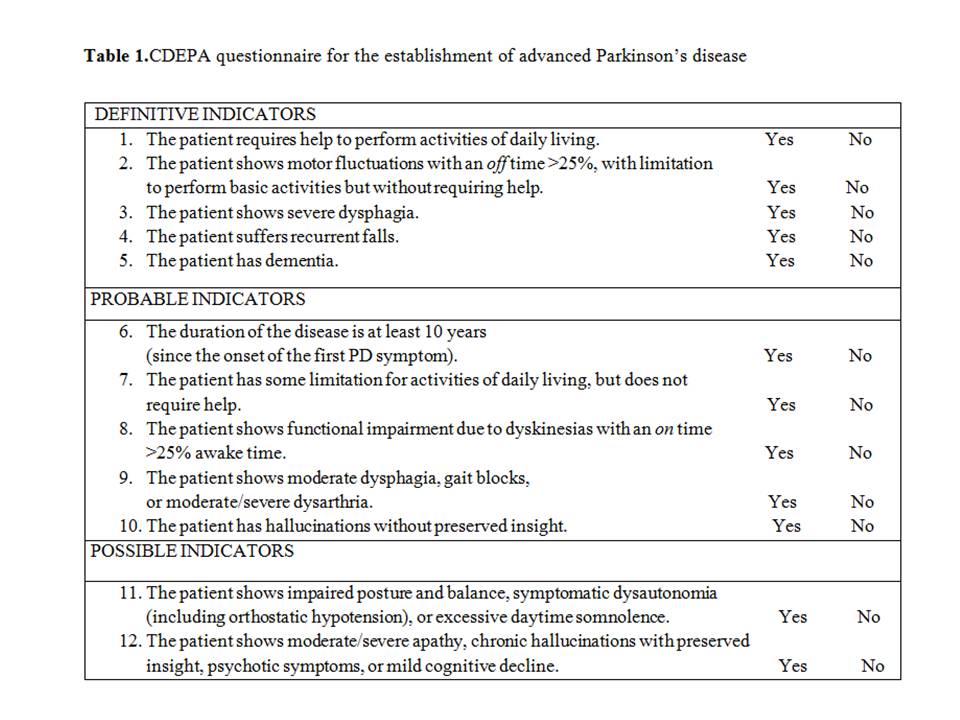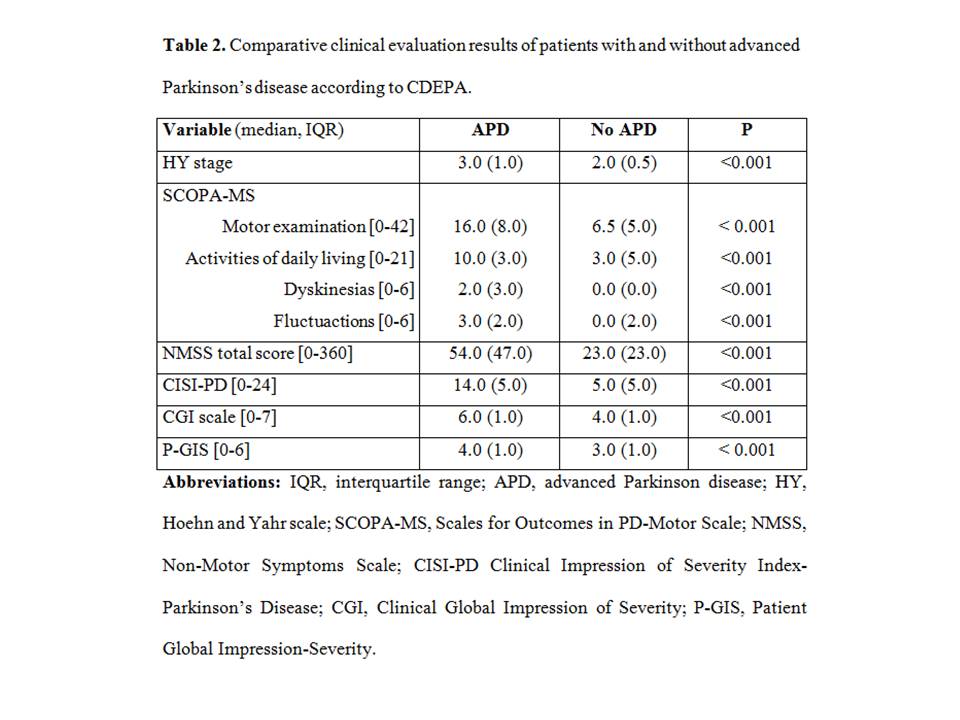Session Information
Date: Wednesday, June 7, 2017
Session Title: Phenomenology and Clinical Assessment Of Movement Disorders
Session Time: 1:15pm-2:45pm
Location: Exhibit Hall C
Objective: Using the Delphi methodology we previously obtained a consensus on the definition and clinical characteristics of advanced Parkinson’s disease (APD). We aimed to develop and validate a simple screening tool (CDEPA) that could reliably identify patients with APD in the clinical setting.
Background: There is a need for definitive criteria to diagnose patients with APD that make them eligible for advanced therapies, i.e. deep brain stimulation, continuous subcutaneous apomorphine infusion, or infusion of levodopa/carbidopa intestinal gel.
Methods: Parkinson’ disease (PD) patients were consecutively selected from 25 neurology departments and stratified according to the Hoehn and Yahr (HY) scale. The CDEPA questionnaire consists of 12 definitive, probable, or possible diagnostic features [Table 1]. We analysed the internal consistency, test-retest reliability, and discriminative capacity of CDEPA. Receiver operating characteristics (ROC) curves analysis was used to determine the diagnostic performance (sensitivity and specificity) of the tested questionnaire versus the gold-standard criterion based on clinical judgement.
Results: Two-hundred and eighty PD patients (mean age (SD) 68.3 (10.3) years; 40.7% female) were included in the analysis: HY stage 1, n=21; HY 2, n=69; HY 3, n=94; HY 4, n=18. The CDEPA questionnaire showed high inter-rater reliability (n=96; kappa index=0.88) and test-retest reliability (n=46; kappa index=0.83), and classified advanced vs. not-advanced PD with a sensitivity of 97.4% and a specificity of 49.4%. The AUC of the ROC curve was 0.73 (95% confidence interval, 0.69-0.77), and the positive and negative predictive values were 58% and 97%, respectively. When patients categorized by the CDEPA were compared in terms of the classical PD evaluations (HY scale, Scales for Outcomes in PD-Motor Scale, Non-Motor Symptoms Scale, Clinical Impression of Severity Index-PD, Clinical Global Impression of Severity, and Patient Global Impression-Severity) all the outcomes were significantly different [Table 2].
Conclusions: The CDEPA questionnaire is a reliable and valid instrument for an easy screening of APD, which in turn has important clinical implications.
To cite this abstract in AMA style:
M.-R. Luquin, J. Kulisevsky, P. Martinez-Martin, P. Mir, E. Tolosa, P. Garcia-Delgado. Development and validation of diagnostic criteria for advanced Parkinson disease: the CDEPA questionnaire [abstract]. Mov Disord. 2017; 32 (suppl 2). https://www.mdsabstracts.org/abstract/development-and-validation-of-diagnostic-criteria-for-advanced-parkinson-disease-the-cdepa-questionnaire/. Accessed December 25, 2025.« Back to 2017 International Congress
MDS Abstracts - https://www.mdsabstracts.org/abstract/development-and-validation-of-diagnostic-criteria-for-advanced-parkinson-disease-the-cdepa-questionnaire/


